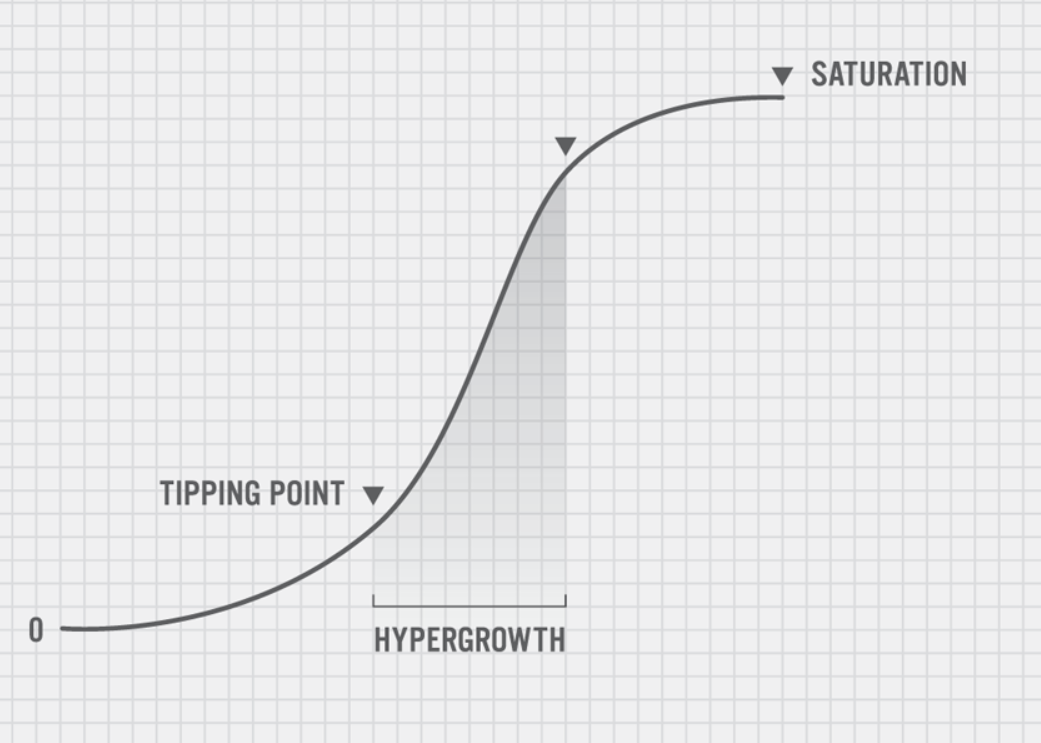Table of contents
disruptive innovation
A foundational idea behind disruption is that incumbent firms fail to recognize game-changing opportunities because they are mired in the day-to-day management of existing products and services.
Johnson extends this concept to personal situations. When individuals are considered at the peak of their career, they often remain in positions that fail to challenge them adequately. The reasons vary, but include finances, ego and fear. We may stay in a job that no longer provides growth opportunities just because it is familiar.
this is some the Key Ideas form the book:
what is the S curve?
the S curve is a learning curve, everyone’s on a learning curve, including you, it looks like this, there are three parts.
- Number one, there’s the low end or the launch point of the curve, and it’s characterized by inexperience, you’ve just started a new role just started a new job growth is going to be slow. And that means that some days, you’re going to feel kind of discouraged.
- Then there’s a sweet spot, or steep part of the curve, which is characterized by exhilaration, and learning and confidence, things will be hard, but not too hard, easy, but not too easy. All of your neurons are firing, this is that sweet spot of that S curve.
- And then there’s the high end of the curve with the high end of the curve is where you become a master, you’ve mastered your domain, which is characterized by boredom.

what’s encouraging about that is then you can say to yourself, okay, that’s why I’m cranky. That’s why I’m bored. That’s why I’m feeling like I need to do something new. And once you know that, you can say, Alright, I need to do something about that.
You might be thinking, alright, really, like, I’m really enjoying the top of this S curve, it’s pretty comfortable. And for me to jump to new S curve, it’s going to be kind of scary, it means I need to put myself into a situation where things are brand new, and really uncomfortable, and I really don’t want to do it.
But it’s also scary. If you don’t jump, if you’re too comfortable. If we stop growing, we get complacent. And that is a huge, huge Danger Zone. when people are at the top of an S curve. it’s also the death zone. Because if you stay there too long, your brain and your body, they start to die, you have to do it.
The S-curve also helps us understand the psychology of disrupting ourselves.
As we launch into something new, understanding that progress may at first be almost imperceptible helps keep discouragement at bay. It also helps us recognize why the steep part of the learning curve is so fun. When you are learning, you are feeling the effects of dopamine, a neurotransmitter in your brain that makes you feel good.
Once we reach the upper flat portion of the S-curve and things become habitual or automatic, our brains create less of these feel-good chemicals and boredom can kick in, making an emotional case for personal disruption. At a career peak, there is certainly the specter of competition from below, but just as importantly, there’s the risk that if we aren’t on a curve that satisfies us emotionally, we may be the cause of our own undoing. When we are no longer getting an emotional reward from our career, we may actually end up doing our job poorly.
